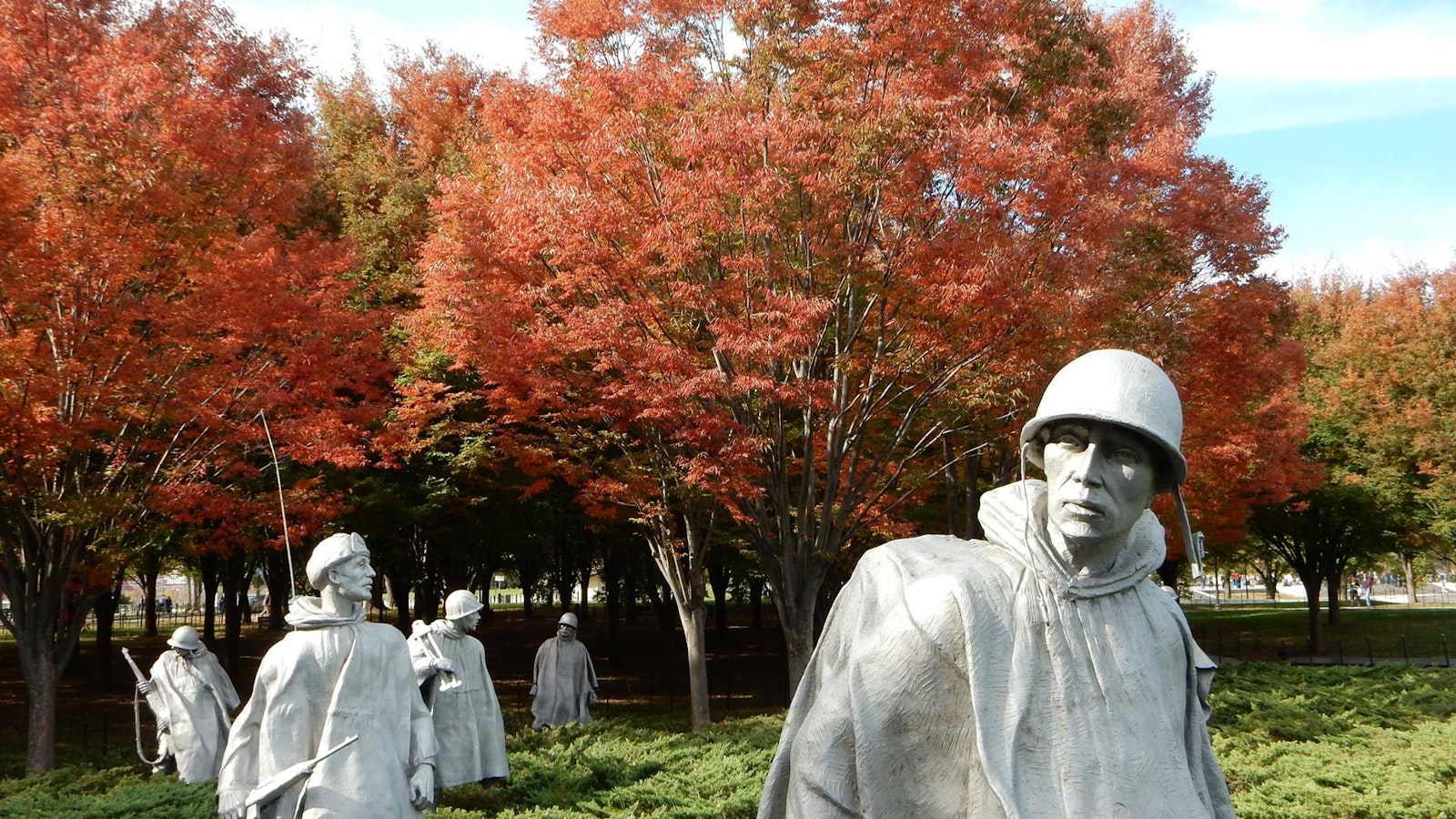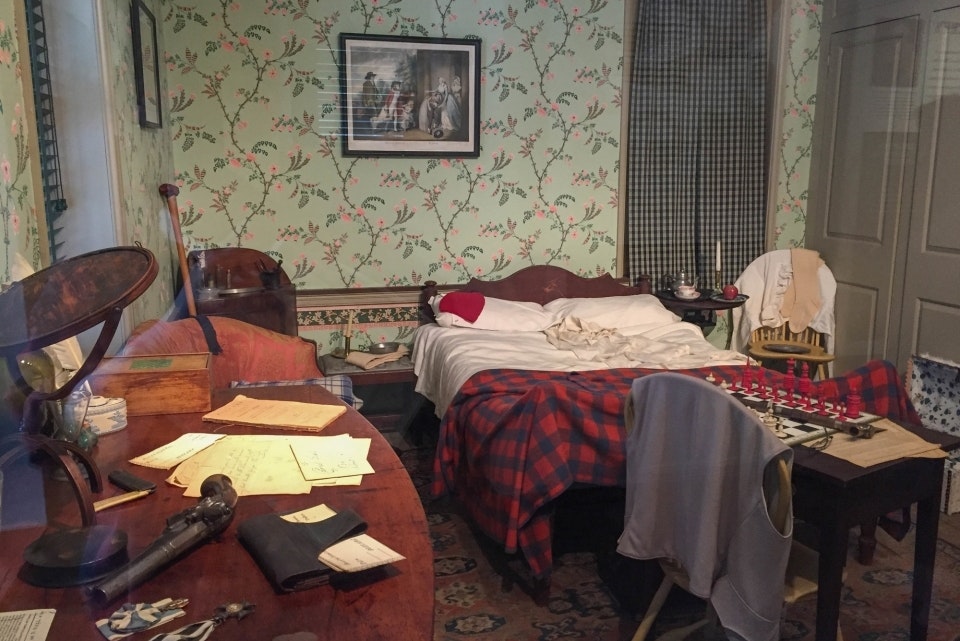Preserving Veterans Stories in National Parks

.
.
America’s national parks stand as great monuments to the history of our nation, in all its beauty and imperfection. The over 400 parks protected by the National Park Service (NPS) preserve countless stories – the histories of our leaders, our visionaries, our civilians, and ourselves. Some of our most iconic national parks commemorate those who have served, keeping alive the history of our military. Join us in exploring and honoring the lives of veterans, whose stories are being preserved and shared in national parks across the country.
Medgar Evers
Medgar and Myrlie Evers Home National Monument

Before Medgar and Myrlie Evers opened and managed the first NAACP Mississippi State Office, Medgar Evers served in the U.S. Army. Medgar Evers joined the U.S. Army in 1943 and fought in Europe during World War II, including at the Battle of Normandy in 1944. After three years of distinguished military service, he received an honorable discharge and returned to Mississippi. Despite his years of service, he continued to encounter racial discrimination and threats of violence at home. Together with Myrlie Evers, he fought against racial inequality, leading boycotts, organizing voter registration drives, and investigating acts of violence against African Americans.

On June 12, 1963, Medgar Evers was murdered in the carport of the Evers’ home. Myrlie Evers continued to work for racial equity becoming one of the first African American women to run for Congress and eventually serving as chairwoman of the NAACP. Their home, now preserved as Medgar and Myrlie Evers Home National Monument, commemorates the lives and legacies of Medgar and Myrlie. The National Park Foundation (NPF) was instrumental in establishing this monument – through a grant to NPS, NPF provided the funds necessary to acquire the Evers’ property from Tougaloo College.
Deborah Sampson
Colonial National Historical Park

The American Revolution is a period in history that seems full of bold, legendary figures, and Deborah Sampson certainly fits that description. Though there are contradictory accounts of her early life, most historians agree that Deborah Sampson was the first woman to join the U.S. Army. In the 1780s, Sampson disguised herself as a man by the name of Robert Shurtleff and joined the Fourth Massachusetts Regiment. Sampson, as Robert Shurtleff, fought in many skirmishes, and even dug trenches at the siege of Yorktown. When she was shot in her thigh, she extracted the pistol ball herself to conceal her identity and continue fighting.
Sampson was eventually discovered after falling ill and being taken to a Philadelphia hospital, and she received an honorable discharge and returned to her home state of Massachusetts. She later fought to receive an army pension, aided by fellow patriot Paul Revere, and went on a lecture tour – the first woman in America to do so – to tell others about her experiences. The early days of America’s history and the stories of the American Revolution are preserved in Colonial National Historical Park, including the battlefield of Yorktown where Sampson fought. NPF’s Women in Parks program seeks to discover and amplify the stories and contributions women have made to our country and the role they continue to play in our ever-evolving narrative.
Theodore Roosevelt
Six National Park Units

A famous “Rough Rider,” Theodore Roosevelt’s time with the 1st Volunteer Calvary during the Spanish-American War made him a well-publicized military leader before his nomination for vice president in 1900. Roosevelt had resigned as assistant secretary of the U.S. Navy to help Colonel Leonard Wood in commanding the regiment, and the Battle of Santiago made him a national hero upon his return to politics.

As president, Roosevelt was a strong advocate for the conservation of natural resources, establishing give new national parks and signing the Antiquities Act of June 8, 1906, allowing himself and succeeding presidents to proclaim historic landmarks, structures, and other objects of historic or scientific interest in federal ownership as national monuments.
Theodore Roosevelt is now commemorated in six units across the National Park System. From his birthplace in New York and the site of his inauguration to Mount Rushmore and the North Dakota park that celebrates the landscapes that inspired his conservationist spirit, Roosevelt’s legacy and impact on the National Park System lives on in parks today. In 1968, NPF allocated a series of grants to restore both Roosevelt’s birthplace and his Sagamore Hill estate in Oyster Bay.
Tuskegee Airmen
Tuskegee Airmen National Historic Site

The Tuskegee Airmen were the first African American fighter pilots and crew in the U.S. Army Air Corps (Army Air Forces), the result of a test conducted to determine if African Americans had ability to fly military aircraft and courage to fight in a war. Trailblazers, pioneers, and leaders, the Tuskegee Airmen fought abroad as well as endured the pressure and violence of living and training in the segregated American South. Despite their rigorous training schedule and the enemies they faced at home and abroad, the Tuskegee Airmen have one of the best records out of any fighter group during World War II.

Today, anyone who served as Tuskegee Army Air Field or in any of the programs stemming from the “Tuskegee Experience” between 1941 and 1949 – man, woman, military, civilian, no matter their background – is considered to be a documented Original Tuskegee Airman. Their efforts in the war and at home are preserved in Tuskegee Airmen National Historic Site. In 2020, NPF's African American Experience Fund supported the creation of a new Discovery Lab classroom at the park. The new space will foster aviation research, education, training, and public programming to inspire the next generation of aerospace engineers.
Thaddeus Kościuszko & Agrippa Hull
Thaddeus Kosciuszko National Memorial

Thaddeus Kościuszko and Agrippa Hull originally met at Fort West Point in New York in 1778. Kościuszko, a well-educated and well-traveled man from Poland, had been appointed a colonel in Continental Army in 1776 after designing blockades and fortresses along the Delaware River. Hull, a free Black man from Massachusetts, had enlisted in the army in 1777, and as the orderly to Major General John Paterson, encamped at Valley Forge in the 1777-78 winter. Hull began serving as an orderly to Kościuszko in May 1779, and the two formed a close bond. Hull and Kościuszko fought together to the end of the American Revolution, including some of the heaviest fighting in South Carolina.

After the war, Hull reportedly turned down an offer from Kościuszko to join him in his return to Poland. Hull went back to Massachusetts and became a wealthy landowner and public figure. Kościuszko returned to Poland and led his own countrymen in a failed revolution. In 1796, he returned to the U.S. and rented a room in a Philadelphia home, sketching and receiving distinguished visitors like then Vice President Thomas Jefferson. With a rise in American distrust of immigrants, Kościuszko made his way back to Europe in 1798, and continued to advocate for a free Poland. That Philadelphia home, now Thaddeus Kosciuszko National Memorial, honors the legacy of both Kościuszko and Hull, and their unique contributions to the American Revolution. Fun fact – this home is the smallest site in the National Park System!
Charles Young & Buffalo Soldiers
Charles Young Buffalo Soldiers National Monument

Charles Young entered the U.S. Military Academy at West Point in 1884 – the ninth African American to do so – and was the third African American to graduate. Young served with the 9th Cavalry before being assigned to teach Military Sciences & Tactics courses at Wilberforce University, where he became a distinguished professor.
Buffalo Soldiers were regiments of all African American soldiers, originally established in 1866 by Congress. Over the next five decades, these brave soldiers served the U.S. Army with distinction and honor.

In 1903, Captain Charles Young became the first African American superintendent of a national park when he and a troop of Buffalo Soldiers were tasked with the management of Sequoia National Park.
Young’s story, and those of the Buffalo Soldiers, is preserved at Charles Young Buffalo Soldiers National Monument. NPF played a major role in the creation of this park in 2013, providing the necessary funding through our African American Experience Fund to purchase the historic property from Omega Psi Phi Fraternity, Inc.’s Friendship Foundation.
Herman Melville
New Bedford Whaling National Historical Park

Herman Melville may be best remembered for his literary works, such as his 1851 Moby Dick, but he was a veteran of the U.S. Navy as well. Melville struggled to find work to support his mother and siblings throughout his youth, working as a teacher and cabin boy, and even studying surveying in the hopes of a post with the Erie Canal project. He eventually became a crew member on whaling ships, the journeys of which provided him inspiration for is early novels. In 1843, Melville signed on as a seaman in the U.S. Navy, and was discharged in Boston in 1844. His time in the U.S. Navy is detailed in Melville’s 1850 novel White-Jacket.
New Bedford Whaling National Historical Park preserves the story of Melville’s inspirational days as a crew member on whaling ships, as well as many other stories from this historic town, which was home to other legendary figures such as Frederick Douglass and John James Audubon. In 2018, NPF supported field trips for students to visit the national park, providing the funding necessary to transport the students and teachers to and from the parks.
Those We've Lost

The National Park Service also protects dozens of battlefields, monuments, historic sites, and memorials that commemorate and honor the service and sacrifice of American veterans. From the fields of Valley Forge National Historical Park to the solemn memorials in our nation's capital, national parks across the country recognize the ways Americans served and honors those who fell. In 2020, NPF supported the introduction of a new Mellon Humanities Fellow focused on the history of monuments and commemoration. Mellon Humanities Fellows, made possible through the support of NPF and a generous donation from the Andrew W. Mellon Foundation, expand the types of stories told and preserved in our national parks.
Together with the park community, NPF works to ensure all people can find their own unique connections to parks. For active-duty military and veterans, as well as their families, national parks can provide a place of solitude, beauty, reflection, and recreation. NPF helps preserve our military history in national parks and connects veterans, military members, and their families to our parks through our outdoor exploration and communities and workforce programs.